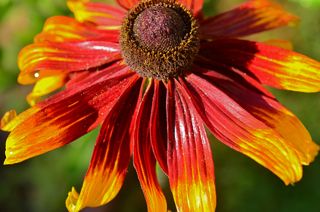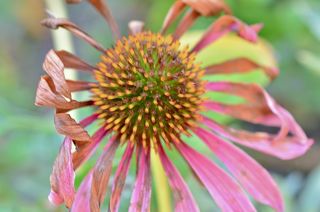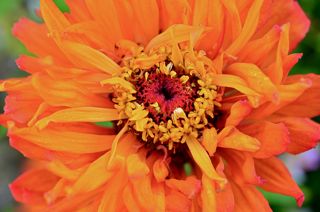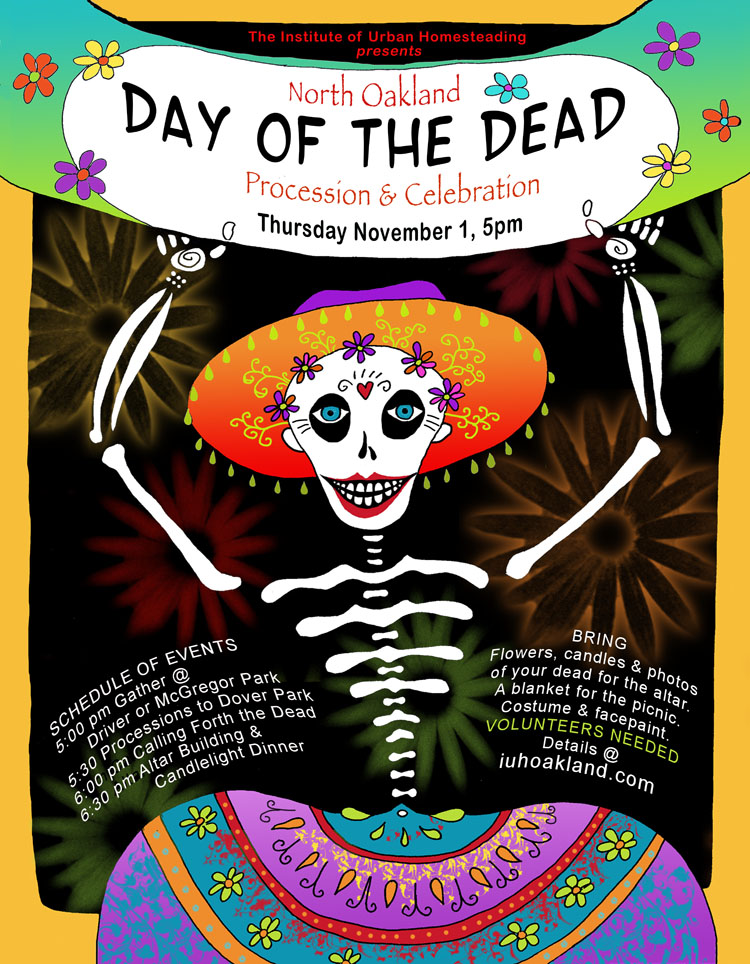Institute of Urban Homesteading
Newsletter
October 2012
Happy Autumn!
I cannot believe it is October already. September was gone in the wink of an eye... It was a big harvest month here including some fun gleaning, canning, dehydrating, wine making and more.... We have one more month of fully scheduled offerings here at IUH before the season winds down. Please check out the class list below and jump on in! I will draw your attention particularly to classes happening this coming week: Making Fruit and Honey Wines--imagine serving your own librations at your thanksgiving feast! DIY Local Medicines will help you prepare for and prevent colds and flus this season and our final fermentation course for the year.Fermentation Intensive: Harnessing the Power of Living Micro-organisms in Your Kitchen offers a wide range of simple kitchen ferments and lots of tasting. In DIY Spa: Home Facials you learn to make skin care product from organic ingredients and get a facial all in one afternoon!



1st Annual North Oakland Day of the Dead Procession & Celebration
Volunteer, Donate, Spread the Word!
We are gearing up for our local Day of the Dead celebration and it can't happen without you! The schedule of events is below as well as ways for you to join in, donate & spread the word
The Day of the Dead is an important spiritual holiday, a time to honor our ancestors and those who have gone before us, our Beloved Dead. In traditions and cultures around the world, this is the time when “the veil between the worlds draws thin, “ both literally and figuratively. This celebration marks the end of harvest, when nature itself goes into dormancy. Tradition holds that at this time the dead can cross over to the land of the living to partake of worldly pleasures and visit their loved ones. Day of the Dead is also a celebration of locale. In Mexico people camp out in the cemetery for days reconnecting with community past and present. Traditional European celebrations of the season were marked by the spiral dance—a joining of hands of the entire community to celebrate where we’ve been and where we are going, who has passed on and who has been born. The first annual North Oakland Day of the Dead celebration embraces the spirit of the season and our place. . We invite everyone from the neighborhood and beyond to join us in this home grown Day of the Dead Celebration, honoring our people and our place.
The celebration will connect two ends of the neighborhood with processions starting at the two triangle parks., Driver Park (60th & Adeline) and McGregor Park (52nd & West). You get to choose where to start! The processions will join at Dover Park for a short ceremony calling forth the dead, community altar building and candlelight picnic (food provided).
Participants are invited to wear a costume or facepaint, bring flowers, candles and/or digital photo copies of their beloved dead for the altar. It is also recommended to dress warmly and bring a blanket to sit on. We respectfully ask folks to refrain from picture taking during the procession and ceremony. Other times photography is welcome.
Schedule of events
5pm Gather at either Driver Park or McGregor Park
5:30 Processions to Dover Park
6pm Music Jam and Ceremony--Calling for the Dead
6:30 Altar Building and Food
8pm Clean Up
Can You Help?
Please send us your bodies, donations, ideas and leads! Just reply to this email and I will forward to the right crew coordinator.
Volunteers: We still need a parade leader for the Mcgregor Park Procession--coalesce and head off the procession. Also security monitors, cooks, servers, clean up crew and folks to help build and set up the altar.
Donations: Food, especially fresh ingrediants, veggies. Also bulk rice, beans, milk and masa. Any leads on donations from local restaurants of salsa, mole, or pan de meurto. Paper plates, cups, napkins and utensils--even those opened ones that have been taking up space in your garage. Beautiful stuff for the altar--your depleted corn stalks, amaranth, gourds etc.
Wanted to borrow: Extra Large restaurant sized cooking pots, portable propane burner and tank. Conference table
Spread the word: downloadable color poster downloadable black and white handbills press release
Seed Saving Lesson #4 (and last) Don't Try This At Home!
I have been encouraging you to save seed and I won't stop. But some plants are a challenge at best especially in an urban environment. It is important to understand how these plants are pollinated and what it would take to ensure seed purity so that we don't attempt it, get it wrong and in doing so pass along seed that won't grow the plant it is supposed to. If you are saving seed for your personal use--it really doesn't matter if the seed is pure--save and experiment away.! Indeed many valuable varieties were developed in haphazard outcrossings by home gardeners and small scale farmers. At some point though, they isolated that seed and made it "stable" Here are some crops considered "advanced" in their seed saving requirements.
Corn is wind pollinated. Each silk leads to the embryo of one kernel of corn. the Tassels put out copious pollen to ensure that each silk gets a grain. Isolation distances are up to 2 miles for corn. To ensure purity, the ears must be bagged before the silks come out. The bags are quickly removed, hand pollinated with several tassels and then replaced. To ensure diversity a minimum of 100 plants to work with is suggested.
Carrots readily outcross with their wild relatives such as Queen Anne's Lace and can revert to a woody unplalatable root in just a few generations. Carrots go to seed in their second year, so seed saving is a long term commitment Like corn carrots need bagging and at least 100i individual plants to ensure good genetic diversity.
Brassicas (broccoli, kale, turnip) are insect pollinated and extremely attractive to bees. They love to cross within their species and with less tasty wild relative such as mustards, radishes and wild cress. To ensure purity the require 1/2 mile isolation distance and/or caging with introduced pollinators. They also need a larger group of plants to ensure good genetic diversity.
Chenopods (chard, beets) The chenoipods have tiny, unspectacular flower which produce copious pollen which can travel up to 5 miles on the wind. They readily outcross with less spectacular wild food plants like lambs quarters and pigweed. Commercial production relies on isolation distances for purity, in the home garden the seed stalks must be bagged with additional cotton batting around the stalk to prevent pollen from escaping!.
Permaculture Principle #7 Design From Patterns to Details, "We can't see the forest for the trees"
This principle asks us to step back and look at the big picture, observing patterns in nature and culture which we use as the backbone of our designs. For example, if we observe that in nature, water flows to the lowest point in the land, and we are in a dry climate, we may choose to put our most important and thirsty food crops in that area. Or, if we have no low points we might choose to dog swales to create low points for rain gardens. Once we've establised that larger pattern, we'd fill in smaller details, such as exactly which plants we'll choose and how they will be arranged. As another example, we might observe in society, that people tend to like to hang out in the kitchen. So we might decide to make the kitchen Yurt the center of our design. The details would be in exactly how the kitchen is laid out for best people flow. Or we might observe that people much prefer to hang out in small thoroughfares rather than huge open spaces (notice how the hallway is always packed when you want to walk through). So we might design our garden with lots of little hideaways for sitting and gathering with friends.
News
These two important issues came across my desk.
Documentary on Colony Collapse Disorder The truth comes out!
Big Organic Joins Monsanto in fighting Prop 37 And why wouldn't we want to know what is in our food? Please vote on this one!
Recommended Film
The Gleaners and I, by Agnes Varda
This heartwarming documentary made on a handheld digital camera takes us around the French countryside to listen to the stories of gleaners--from those picking up the culls after potato harvest to those sifting through the waste of farmers markets. With unembellished beauty and blunt honesty Varda examines herself and the world offering a stark portrait of the modern day commons.
